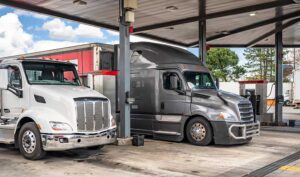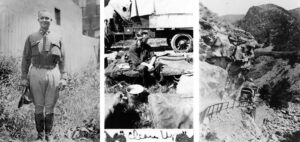Despite political squabbling on both national and international scales, it is becoming increasingly clear that clean energy will play a major role in the future of the global economy as well as in the health of the environment. In addition, as technologies advance — and with tax levies sure to come for those who don’t climb aboard the clean energy bandwagon — finding alternatives to fossil fuels will likely become less expensive.
For trucking, clean energy is not a matter of “if”; rather, it is question of “when.”
In March, leaders in the trucking industry made a formal commitment to clean energy with the launch of the Clean Freight Coalition (CFC).
The Truckload Carriers Association (TCA), along with the American Trucking Associations (ATA); the American Truck Dealers, a division of the National Automobile Dealers Association; National Tank Truck Carriers; and the Truck & Engine Manufacturers Association are the founding members of the coalition, and the National Motor Freight Traffic Association was quick to jump on board.
The CFC represents motor carriers of every size and in every sector, along with truck manufacturers and truck dealers. Together, these industry stakeholders hope to better pave the way for zero-emissions heavy-duty transport vehicles.
Jim Mullen will serve as CFC’s executive director. Mullen has extensive regulatory, legislative, and legal experience within the industry, having previously served as acting administrator and chief counsel for the Federal Motor Carrier Safety Administration, chief administrative and legal officer of a publicly traded autonomous truck developer, and general counsel for a large publicly traded truck company.
“Trucking is the backbone of our economy and critical to the nation’s supply chain. It is an honor to lead the CFC in its pursuit to get to zero emissions in a responsible and feasible manner,” Mullen noted.
TCA President Jim Ward voiced his industry’s dedication to clean energy.
“Truckload has long been on the road to zero — embracing new advancements in emissions-reducing technology and critical improvements to infrastructure,” he shared. “The key to our shared success will be in establishing a realistic time line and multiple-solution approach that ensures productivity for drivers and reliability within the supply chain for consumers.”
The CFC is committed to adjusting the motor freight industry to take advantage of new and developing technologies and participate in policy making — rather than trying to make clean energy fit the needs of the industry.
“For this to happen, we need carrier involvement in all stages of the testing process to help identify operational challenges on the ground,” Ward said. “All modes of our industry stand ready to work together to prepare for this essential transition.”
Specifically, the three-part mission of the organization includes educating policymakers on the progress the trucking industry has already made in reducing emissions and protecting the environment; promoting work that’s underway to reduce greenhouse gas emissions from freight transportation; and advocating for public policies that transition toward a zero-emission future while ensuring affordable and reliable freight transportation protecting the nation’s energy supply.
The CFC website notes, “As the trucking industry’s essential role in the economy continues to grow, our environmental footprint continues to shrink.” For example, today’s trucks emit 98% less nitrogen oxide and particulate matter than those manufactured just 35 years ago; it takes 60 modern trucks to emit the pollutants of one truck manufactured in 1988. Other accomplishments include the virtual elimination of all sulfur oxide emissions in the last 17 years.
In partnership with the U.S. Environmental Protection Agency (EPA), over the past eight years freight carriers worked closely with the U.S. Department of Transportation on both Phase 1 and Phase 2 regulations to reduce greenhouse emissions. These regulations are expected to reduce carbon dioxide emissions by 1.37 billion metric tons and reduce oil consumption by over 2.5 billion barrels.
Also in partnership with the EPA, the industry created the voluntary SmartWay program in 2004. The program and its participants cut carbon dioxide emissions by 152 million metric tons and saved 357 million barrels of oil. The CFC notes that the cuts represented, in terms of electricity, the amount of energy used in 23 million homes.
The CFC partners acknowledge that the transition to zero-emissions won’t be an easy one. The coalition notes that full electrification of the U.S. vehicle fleet will require 40% of the nation’s electricity generation, and — depending on the state — up to 60% of existing electricity will be required. This is no small feat, and it will take a combination of many types of power sources to make up the difference. Solar, wind, hydroelectric, and biofuels are just a few of the existing energy sources that will be tapped.
Success relies on a careful process, taking into consideration important factors such as cost parity, market incentives, infrastructure, and access to a variety of scarce natural resources.
According to the CFC website, national standards that are technology neutral will be required to achieve the zero-emissions goal — and those standards must empower innovation and enable the industry to plan and invest in its future. From the standpoint of government, policies and programs must provide sufficient lead time, create regulatory stability for consumers and manufacturers, and support necessary infrastructure development.
Success also depends on the joint efforts of every industry partner within the CFC, as well as those who have yet to join. Zero emissions is a lofty goal, but with a unified industry and government agencies both focused on the same end, the means will follow, and the road to clean energy in the freight industry may set a standard for the rest of the world to follow.
“The trucking industry starts with ‘Yes,’ as we’ve demonstrated through massive emission reductions over the last three decades,” said ATA President and CEO Chris Spear. “To get to zero, we have to be honest and transparent about the road ahead. Success depends on a national energy strategy that is inclusive of our industry — the most central and critical link in the supply chain.”
This article originally appeared in the May/June 2023 edition of Truckload Authority, the official publication of the Truckload Carriers Association.
Since retiring from a career as an outdoor recreation professional from the State of Arkansas, Kris Rutherford has worked as a freelance writer and, with his wife, owns and publishes a small Northeast Texas newspaper, The Roxton Progress. Kris has worked as a ghostwriter and editor and has authored seven books of his own. He became interested in the trucking industry as a child in the 1970s when his family traveled the interstates twice a year between their home in Maine and their native Texas. He has been a classic country music enthusiast since the age of nine when he developed a special interest in trucking songs.















